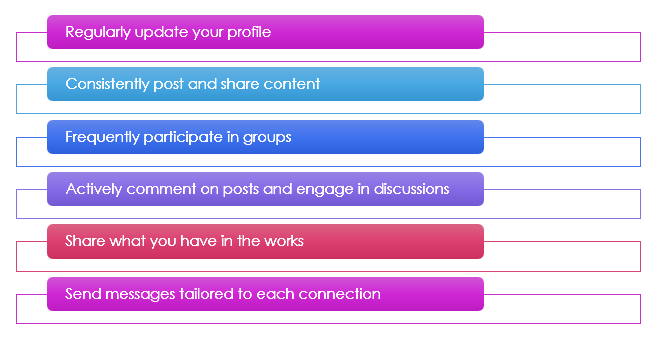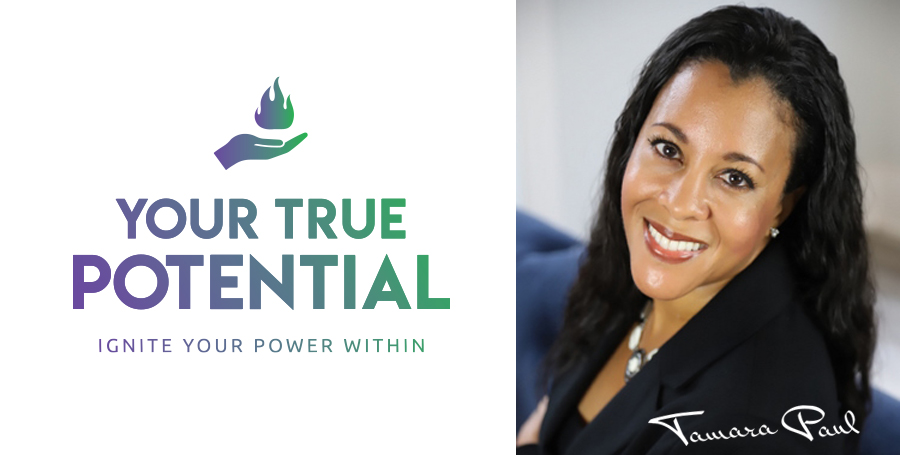Welcome to
Networking on Social MediaBuilding your professional network on social media
Module Two
Pick the Best Social Networking Tactics for Your Goals
Now that you’ve taken the time to perfect your social media profile, you’re ready to identify which tactics you’ll use to successfully network. Just like when you decided which social platform to use, your networking goals will dictate your tactics.
When it comes to social networking tactics, the tactics you will use are either direct or indirect.
Direct Tactics
Direct tactics are best used for existing connections: people you already know, have met before, follow you, or who are directly referred to you.
You should use direct tactics with those connections who already know you, because if a potential connection doesn’t know you, there’s a chance you won’t make an impact and you may even be ignored completely.
The best part about using direct tactics with existing connections is that you’re reaching out to people who are already interested in you or your brand. This means your direct approach is more likely to be welcomed with open arms.
The most common direct networking tactics are private messaging and cold emails (emails without prior contact or a request for information previously). Another direct tactic is tweeting directly at someone or tagging them in a post or comment.
Sometimes your networking efforts will start through social media but expand elsewhere once you’ve made a connection with the person. If your connection has their email or phone number on their profile, it may mean they’re willing to be contacted, but that doesn’t mean you should just call or send a cold email. The same basic principles of networking apply.
Tips
Go in with a plan. Before you reach out to your connections, make sure you are clear with your intent and keep these tips in mind:
- Remind them of your connection. If you haven’t been in touch recently or just met them, remind them of how they know you, where you met, or who introduced you.
- Keep it short and sweet. Make sure you get to the point quickly. Don’t make your connection read a novel just to understand the point of your message.
- Make it personal. Start your email or message by using their name and including something personal about them. It can still be short and sweet. For example, “Hi Susan, congrats on your [recent success]”
- Make it professional. Just because you add a personal tone to your message doesn’t mean it should be unprofessional. Make sure your spelling is correct and avoid using slang, but don’t be overly formal.
- Find out what you have in common. Take the time to see if you share interests. Maybe you share a contact, follow the same businesses or even participate in the same groups. By finding out what you have it common, it’s more likely your connection will respond to your message.
- Make it about them. Don’t make it all about yourself. Proactively think of ways you can be of service to your connections. Show them that you can solve a problem. Focus on your connection and what’s in it for them.
- Ask a question. Don’t be afraid to ask. If you want something, ask for it. Go ahead, ask for an introduction, ask for feedback, ask for a meeting, ask for mentorship – just make sure your ‘ask’ is clear.
Follow up. Don’t lose all of your hard work reaching out to your connections by not following up.
When to Reach Out
Knowing when to reach out to your connections can be tricky. Here are a few ideas for reaching out.
You can reach out to:

- Share a personal professional update or announcement
- Send a welcome message to a new connection or follower
- Share content that would be of interest or value
- Request a recommendation
- Congratulate a connection on a new job opportunity or recent success
- Collect feedback
- Ask for help, advice, or guidance.
Indirect Tactics
Indirect tactics are ideal for people you’ve never met or can’t contact directly right away. A benefit to using indirect tactics is that you can often reach a larger audience, whereas direct tactics typically target one person at a time.
Some ways in which you can indirectly network are to:
- Join and participate in groups frequented by the people you want to connect with
- Follow pages and influencers to learn more about different industries and get more insight on your ideal customer
- Post questions to gather feedback and start discussions
- Contribute to discussions by commenting on other posts
- Post your original content to expand your reputation as an expert
- Share content regularly to solicit likes, opinions, feedback, and more
- Become a customer by following different company pages to gain insights
Tips
- Be a valuable part of a community. Remember Social Media Networking is about forming genuine connections. Be sure to share your expertise and be an active contributor. Don’t be one that’s always asking for something from others.
- Post regularly. If you want to get noticed, post and share consistently. This helps keep you top of mind and others are more likely to view you as an expert.
- Don’t be overbearing. It’s a great idea to post consistently and regularly but avoid being overbearing. Stick to posting 1-2 times per day. Otherwise your followers may become annoyed and you risk losing those connections.
- Keep your profile updated. With an updated profile, you’re more likely to get connected with your peers and other professionals. As your skills and interests evolve, make sure to add them to your social media profile. That way, people with similar interests will be more likely to find and connect with you.
Use specific hashtags. Hashtags are a great way to indirectly make connections. Keep your hashtags targeted to a specific interest – you’ll have better engagement this way. For example, let’s say you are in the business of career coaching. Instead of using the hashtag “#career”, try narrowing it down to “#careercoach”. That hashtag is more specific to what you do and, that way, if someone is looking for a career coach, they can search that hashtag to connect with you.
Best Practice Tactics
Now that you know the difference between direct and indirect tactics, it’s important to keep certain best practices in mind. These best practices will ensure you have the most success in your Social Media Networking efforts.
Make Your Presence Noticeable
Stay at the forefront of your connections’ minds by making sure people know what you are doing professionally. If people know what you’re up to, they can refer you to their connections – “Hey I know just the person…”
Here are a few ways to make sure your presence is noticeable:

- Make sure your profile is regularly updated with your latest skills and accomplishments
- Consistently post and share content
- Frequently participate in groups
- Actively comment on posts and engage in discussions
- Write a message or create a post to share what you have in the works
- Send messages tailored to each connection’s needs
Reciprocate & Nurture Your Connections
Do something for someone else with zero strings attached. They’ll feel obliged to return the favor, which usually means introducing you to some of their contacts. This is a sure-fire way to grow your network in a personal way.
“Build the right relationships with the right people and nurture them over time and you’ll always have a leg up on the competition.” – Paul May, Buzzstream CEO
Once you’ve started to grow your network, don’t get so busy that you forget to nurture your existing connections. Nurture your relationships through regular engagement such as liking, sharing and commenting on posts. Use your direct tactics to message your connections when it’s appropriate.
Trade Contacts
Introduce contacts who may benefit from the referral. Again, they’ll likely do the same for you when they can. The bonus here is that as you introduce your connections to each other, you’ll start to be viewed as an expert by your network.
Find your story
Figure out what makes you unique. Then, use it to be more memorable in the minds of your new contacts by adding it to your network profiles. Avoid being just like everyone else. Think about what separates you from the competition and use that to stand out.
Personalize Everything
When reaching out to new professional contacts, make sure your method of communication is always personal by using their name, business info, and including a little about them where relevant. You might find it tempting to use the default messages on LinkedIn for making new connections, but try to avoid them and send a personalized message instead. This creates a more genuine connection.
Listen & Observe
Just like with in-person networking, avoid dominating the social networking space by talking only about yourself or your business. Try your best to “listen” to what others are saying online so you can make a genuine contribution to the discussion. This way, you can provide a meaningful suggestion, solve a problem, and identify key influencers. This will strengthen your connections because you are giving more than taking.
Keep It Professional
There is a fine line between being overly formal or informal when you use social media to network. Your goal should be to represent yourself in a professional way and still be likeable and able to connect with others. It is called “social” media after all.
Be careful with what you share. It’s best to avoid sharing or posting about religion or politics, unless that’s your topic of expertise and a core part of your business.
Make sure your spelling is correct, avoid using slang, and don’t use curse words (stay away from “OMG” or “WTF”). Make sure you proofread long posts.
Remember, social networks are casual and it’s okay to be human. Connect with people the same way you would at a networking event. You can still be professional without being stuffy. Have fun with it and be true to yourself.
Do What You Promise
Gain trust in others by doing what you promise. If you said you would find a link or share a resource or create a video, then do it. Make sure you follow up in a timely manner – the promptness of your reply is usually just as important as the message itself. Your follow-through is the most important step in networking and one of the easiest ways to grow meaningful connections.
Activity:
- Identify the best methods to reach out to people on each network, based on your current relationship status and type of social media network (e.g., direct message, participating in current online conversations, sharing content, becoming a customer, etc.)
A Word
From Tamara
As an entrepreneur myself I completely understand the stress, anxiety and frustration around launching or growing a business. I also know the rewards and life style change the hard work can provide you if you stay focused. I am here to inspire and motivate you to push forward. The fact that you’re investing in your business education let’s me know you’re in this to win. Rest assured I’m here to help you…. These courses are set up to help you understand the basics. To dig deeper into your specific plan of action we will discuss where you are, where you want to be, eliminate any blocks preventing you from getting to the next step and create an action plan.

Our superpower is making you a superhero.

